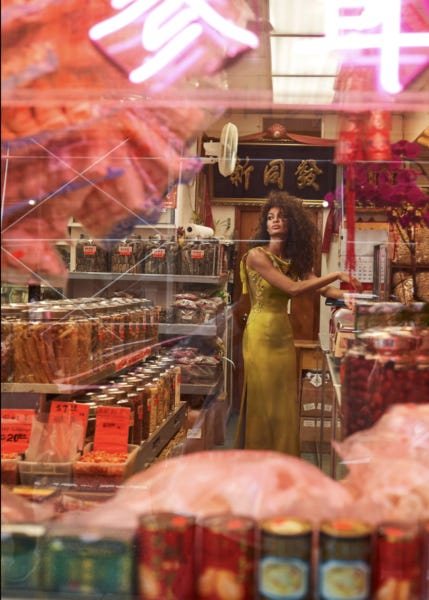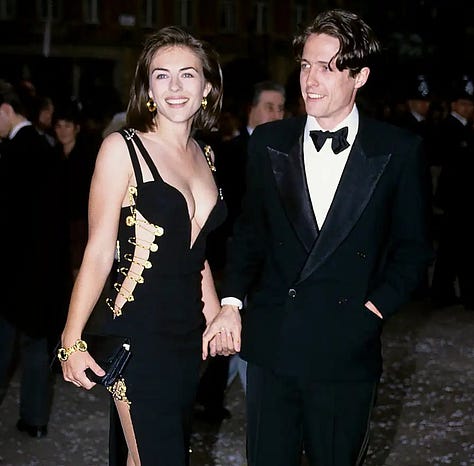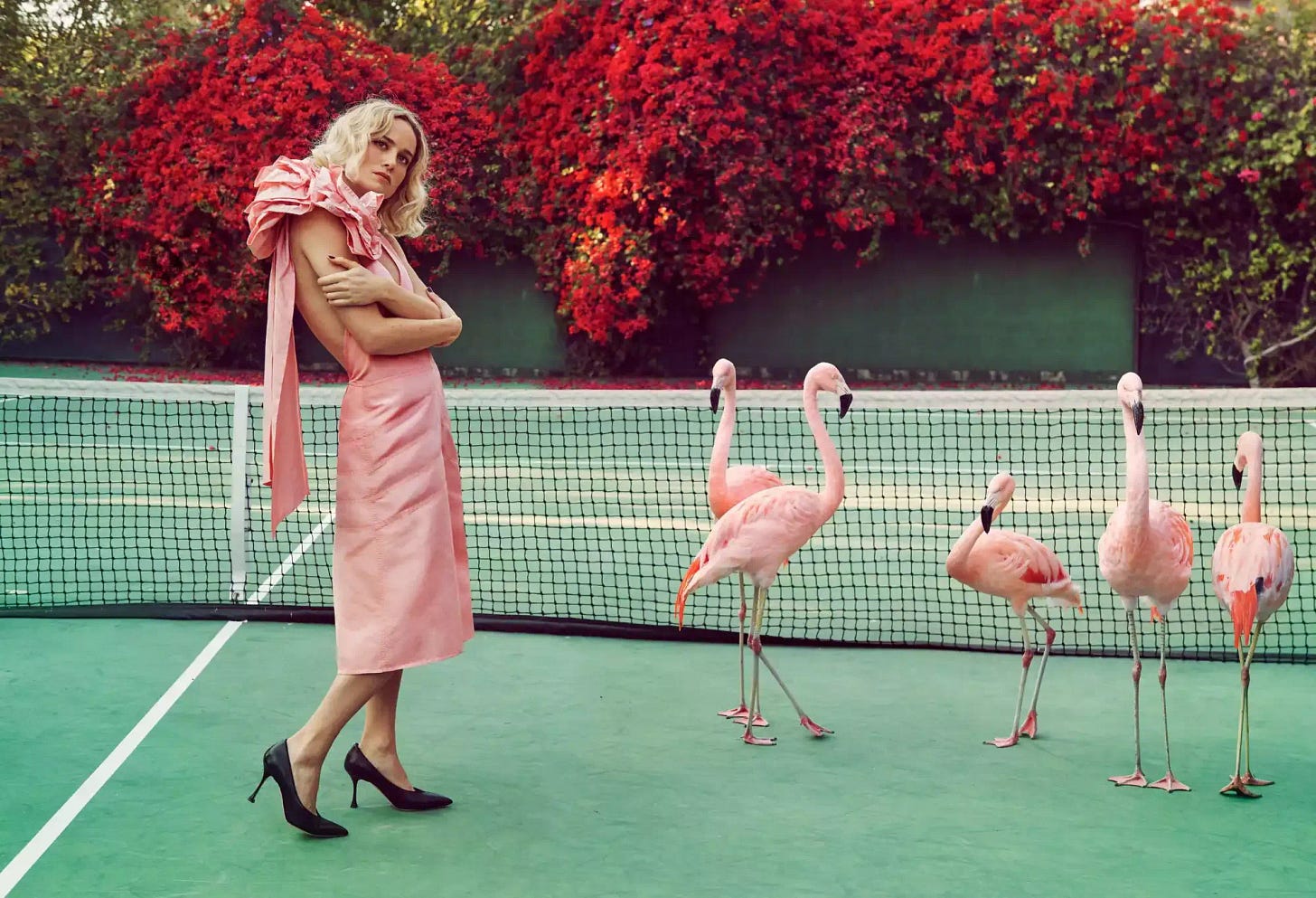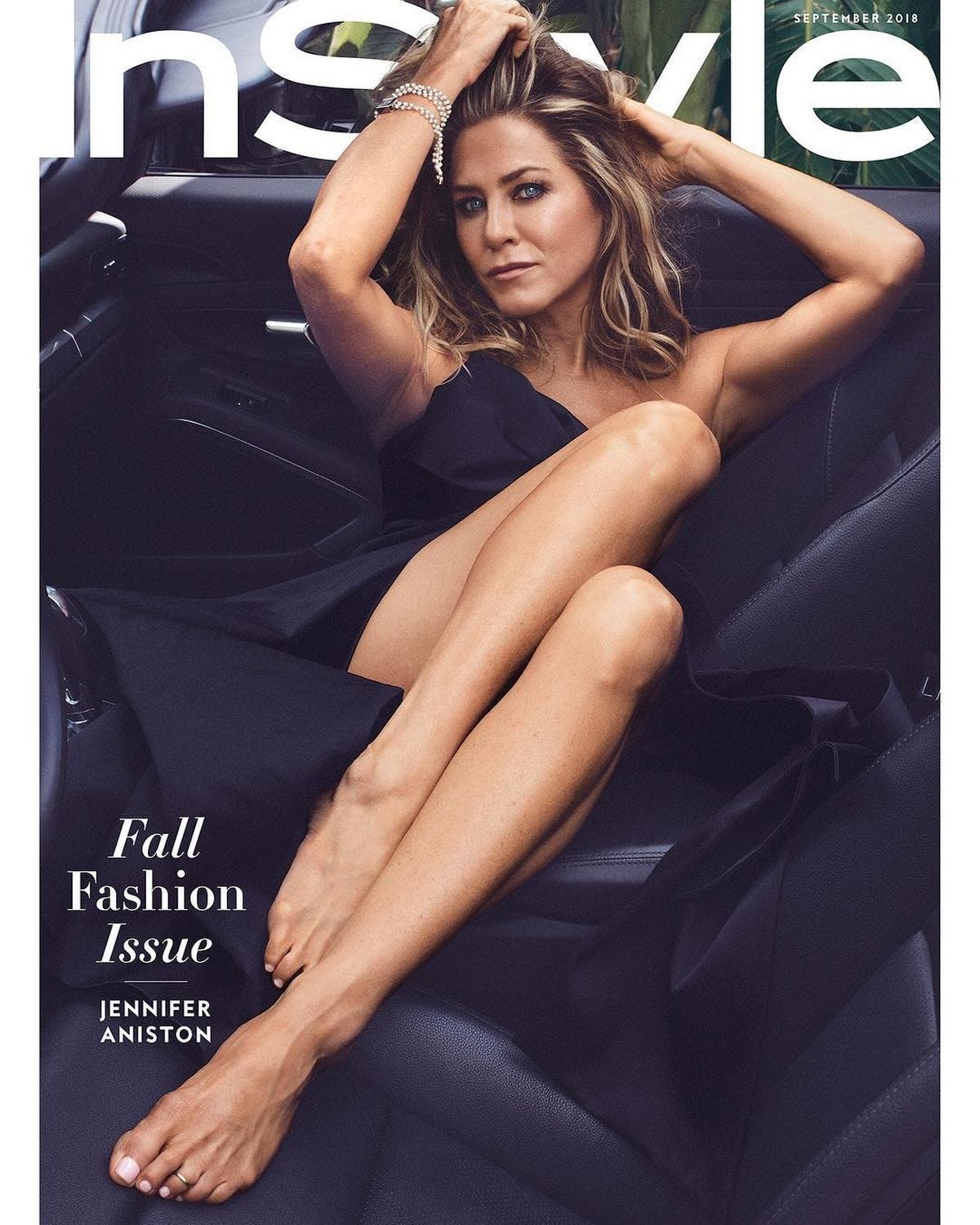Sèven questions with Julia von Boehm on the creative process behind celebrity editorials
Welcome back to the SèveN! For this edition our Fashion Director Audrey Taillée sat down with editorial celebrity styling legend Julia von Boehm.
In the world of celebrity editorial styling, few names shine as brightly as Julia von Boehm. With a career that spans iconic publications such as French Vogue, Interview Magazine, Harper’s Bazaar, InStyle, J.V.B has an unparalleled ability to craft compelling visual narratives that highlight the unique essence of celebrities. In this exclusive interview, she shares her insights on the creative process behind celebrity shoots, her journey to the U.S. market as Fashion Director for InStyle, and the delicate balance of creativity and empathy required in today’s fashion landscape. Join us as we delve into the mind of a true creative in our industry.
You’ve worked on so many celebrity editorials over the span of your career. Can you explain a little how you craft the concepts for these shoots, build teams to execute them, and ultimately create such strong images?
J.V.B: The starting point for these editorials really is the celebrity you’re shooting. You usually craft a story around their DNA and try to show them in a new, creative way, but one that stays true to their identity. So much of the work gets done and approved in advance. In general, the more you are prepared, the less things can go wrong with celebrity shoots. Sometimes your vision needs some tweaks on set. You can play with hair and make-up, but in general I always go in knowing exactly what we are trying to achieve.In terms of team, especially when it comes to photographers, it’s so important who you work with. They need to be communicative and able to shoot fast, because you can’t have a celebrity hold a pose for an hour and a half. Sometimes you only have 5 hours to shoot 12 pages! It also matters how they shoot. For example, it’s very difficult to shoot a celebrity on film because their teams like to see shots on the monitor in real time.
With InStyle, every cover was a celebrity shoot so I really got the chance to explore creative ideas around the celebrities. For example, when we shot Brie Larson in Los Angeles, the vision was to position her as a flower amongst other flowers in a garden. The concept dictated the location, the photographer (in this case Pamela Hanson) and the styling, but I always like to add a twist by introducing a little humor or originality, to make the image stand out. I decided to add some live tropical birds into the mix, black swans, cockatoos, parrots, flamingos, and to bring them to a tennis court! These unexpected elements, that at first might seem strange, can really contribute to the overall impact of the image and the story.
Speaking of InStyle, can you tell us about your move to the US market and what you set out to achieve as the magazine’s Fashion Director?
J.V.B: I like challenges, so when I was asked to join the magazine I thought, “why not?”. I knew Laura Brown, the Editor in Chief, from her days at Harper’s Bazaar because I shot a lot of celebrities for them. I knew her vision, and knew the environment would be supportive for bringing my creativity to life. Coming from French Vogue to such a widely distributed magazine in the US market, I think the goal was to bring big creative ideas - perhaps an almost “cinematic” approach - to our editorials. I really wanted to allow our readers to consume the best of fashion with strong images.Coming from French Vogue to such a widely distributed magazine in the US market, I think the goal was to bring big creative ideas - perhaps an almost “cinematic” approach - to our editorials.
You’ve made celebrity editorial shoots a pillar of your styling over the years, do you have a winning recipe on collaborating with them?
J.V.B: I think being German helps! No but seriously, I think being honest goes a long way. I like to involve the talent in the creative concept, tell them about the clothes they are wearing, so they can feel comfortable and not like they are being “disguised” in a costume. It helps that I usually pull things that celebrities like. I keep it sexy, but not vulgar, and work on ideas for editorials that feel personal. It’s part of what I was hired to do, to really tell stories through these editorials while keeping the celebrity center-stage and making it visually interesting for our readers.
My first cover was with Jennifer Aniston, which was kind of “wow”, but I’ve never really let stardom destabilize me. I am impressed by celebrities of course, but like I am by any person who has accomplished a lot. I think this mentality allows me to work with them in a genuine and professional manner and collaborate effectively. For Jennifer, we worked a lot on the feminine/masculine appeal, so instead of using mini dresses, we pulled blazers that we used as dresses to show off her beautiful legs. For the cover, we shot her in a car with her legs in front of her. It’s a beautiful image that worked really well. I would never ever force a celebrity into something that wouldn’t be good for them and that they wouldn’t want to do. It’s important for there to be trust and to never let a set turn sour.
Can you share any ‘do’s and ‘don’t’s for an InStyle celebrity cover image that sells?
J.V.B: Yes! For you, I’ll share a few things I’ve learned:
Eyes looking at the camera is obligatory because, for a magazine that sells a lot on newsstands, it’s important for people to almost feel like they made “eye contact” with the person on the cover. In that sense you could say the cover is more “commercial” than the full story inside the magazine.
Black and white is usually also kept inside the magazine instead of on the cover. I personally LOVE black & white because I shot a lot with Peter Lindbergh, so I was always fighting to sneak one shot into the pages.
We also only featured one person on the cover. It makes sense really, that one face looking at you is stronger than many faces. First of all they become smaller, and you either have to see them full length or crop, but in any case it’s hard to get an equally strong image.
Lastly, a cover should generally convey a “happy” feeling, especially in an often tough world. It’s quite subtle, but a cover with a blue sky will sell better than a rainy one.
Really what you are trying to achieve is an image that will capture the attention of passersby in front of newsstands. An understanding of psychology, the world around you, and a strong sense of empathy and sensitivity is so key.
Really what you are trying to achieve is an image that will capture the attention of passersby in front of newsstands.
I couldn’t agree more! It’s funny that the fashion industry is sometimes thought of as quite shallow, when really it is made by brilliant people that are generally very curious, aware and open-minded. I definitely count you among them! Are there any instances when world affairs had a direct impact on your creative output?
J.V.B: Thank you! I think it helps to be a Pisces at this job. I feel like it helps enormously to be quite delicately aware of others and the outside world. My most recent example was for the Oscars. The ceremony was a few weeks after Russia’s invasion of Ukraine, so it was a particularly difficult climate. I was styling Nicole Kidman, one of the most mediatized actresses at the Oscars, so I had to keep this into account. Although keeping glamor alive in hard times is important, festive sparkles or strong colors can sometimes, in my opinion, feel out of touch. We had originally planned on a red, sparkly Armani dress for the Oscars ceremony. The morning after the war broke out, Nicole, the Armani team and I, all agreed we had to change direction. I thought it would be nice to have a reassuring colour, a light blue, like the curtains of Louis XIV. There were supposed to be sparkles around the neck on the original sketch, but in the end we only kept them on the train. I try to intelligently reflect on what is going on around the world, not to make political statements through fashion, but to make sure my work is never tone-deaf to the world around me.
Do you think the landscape of celebrity styling has changed since your beginnings in the industry?
J.V.B: Yes, absolutely! Before you would never see, or even know the stylists, behind celebrities’ looks. It was all very secret until Rachel Zoe’s TV reality show. Now it seems the more that’s out there about celebrities, the better. I feel like sometimes, seeing so much “behind-the-scenes” can take away a bit of the magic. It’s of course nice to see hints of it, and to credit creatives involved, but I think it should always stay more about the celebrity and the end result, than the behind the scenes process.
Do you have a favourite story you ever worked on, or a shoot that particularly stands out?
J.V.B: Yes! We photographed 25 of the most iconic red carpet dresses for InStyle’s 25th anniversary. You can imagine these were particularly complicated to source. We had to pull them from the designers, the celebrities, and even museums. For example, for Nicole we pulled her iconic green dress designed by John Galliano. The dresses had to be kept at a certain temperature, touched only with gloves etc. What made things tricky is we were shooting outside in New York City, some shots in Chinatown, some in front of the plaza, and at some point it started raining. It was extremely technical and logistically heavy to make this all happen, but I think it’s one of the most special shoots I ever worked on. We shot it with Sebastian Faena, whose style of photography is extremely cinematic and I cherish these images!






We hope you enjoyed our conversation with Julia von Boehm!
To learn more about how Sève can make your styling life easier reach out to us on Instagram or email us at contact@seve.app.
Team Sève 💌






